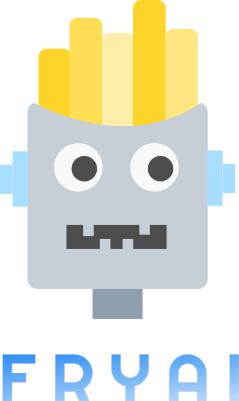- FryAI
- Posts
- AI starts creating video games
AI starts creating video games

Good morning, and happy Monday! Do you smell that? That’s the smell of freshly-cooked AI news—let’s start off the week by digging in together. 🍽️
🤯 MYSTERY AI LINK 🤯
(The mystery link can lead to ANYTHING AI-related: tools, memes, articles, videos, and more…)
Today’s Menu
Appetizer: Microsoft’s new AI (kind of) creates video games 🎮
Entrée: Google Research unveils AI Co-Scientist 👩🔬
Dessert: Another win for AI in diagnostics 🩺
🔨 AI TOOLS OF THE DAY
👩🏫 Flashback: Turn anything into a study tool. → Check it out
👨💻 Lora: Integrate local LLMs with one line of code. → Check it out
🗣️ Talo: A real-time AI voice translator for video calls. → Check it out
MICROSOFT’S NEW AI (KIND OF) CREATES VIDEO GAMES 🎮
I had to take a break from my video game to go to the bathroom. Needless to say, I had a call of doodie. 🤣
What’s new? Microsoft has unveiled Muse, an AI model capable of generating video game visuals and controller actions.
Want the details? Published in Nature, this research introduces the World and Human Action Model (WHAM)—nicknamed “Muse”—developed in collaboration with Xbox Game Studios’ Ninja Theory. Muse learns game dynamics by analyzing human gameplay data from Bleeding Edge. Bleeding Edge is a 4v4 multiplayer game played online, and matches are recorded if the players agree to the End User License Agreement (EULA). Trained on over a billion images and controller actions, the AI model can predict and generate realistic gameplay sequences, evolving scenes based on just a few initial frames. To encourage experimentation, Microsoft has open-sourced Muse’s model weights and sample data, allowing researchers and developers to experiment with the WHAM Demonstrator—a tool that lets users interact with the model through a visual interface. Muse marks a major step in AI-powered game development, opening possibilities for assisting game designers, generating new content, and enhancing interactive experiences in gaming.
GOOGLE RESEARCH UNVEILS AI CO-SCIENTIST 👩🔬
Yesterday, I read an entire book on helium. I just couldn’t put it down. 🎈
What’s new? Google Research has created AI Co-Scientist, an AI system powered by Gemini 2.0, designed to collaborate with scientists in generating research hypotheses and accelerating discoveries.
How does it work? Modern research spans vast fields, requiring scientists to sift through enormous amounts of literature while integrating knowledge from multiple disciplines. AI Co-Scientist tackles this challenge by acting as a virtual research partner, analyzing complex scientific data, generating innovative hypotheses, and refining research proposals. The system operates through a network of specialized AI agents, inspired by the scientific method. It can potentially help researchers identify novel drug treatments, uncover biological mechanisms, and explore uncharted areas of science. In early tests, AI Co-Scientist successfully suggested new drug applications and proposed explanations for antimicrobial resistance, some of which were later validated in laboratory experiments. Google Research is currently enabling access to the system for research organizations through a Trusted Tester Program.
ANOTHER WIN FOR AI IN DIAGNOSTICS 🩺
Doctor: Nurse, how is that little girl doing who swallowed ten quarters last night?
Nurse: No change yet. 🪙
What’s up? Researchers have developed an AI tool capable of diagnosing multiple infections and immune-related conditions in a single test. It does this by analyzing immune-cell gene sequences from blood samples.
How does it work? This approach leverages the immune system’s natural record of past infections, using machine learning to detect disease patterns in B-cell and T-cell receptors. In a study of nearly 600 people, the tool successfully identified individuals with COVID-19, type 1 diabetes, HIV, and lupus, as well as those who had recently received a flu vaccine. By analyzing millions of these immune-cell receptors, the AI achieved an impressive accuracy score of 0.986.
Why is this significant? While not yet ready for clinical use, researchers believe this technology could improve diagnostics by providing a broad health overview from a single blood test. As the tool continues to be refined, it could prove to be very powerful for detecting diseases that currently lack definitive diagnostic methods.
MONEY MONDAY 🤑
People are discovering innovative (and sometimes wacky) ways to make money using AI. Check out today’s featured video:
HAS AI REACHED SINGULARITY? CHECK OUT THE FRY METER BELOW:
What do ya think of this latest newsletter? |



